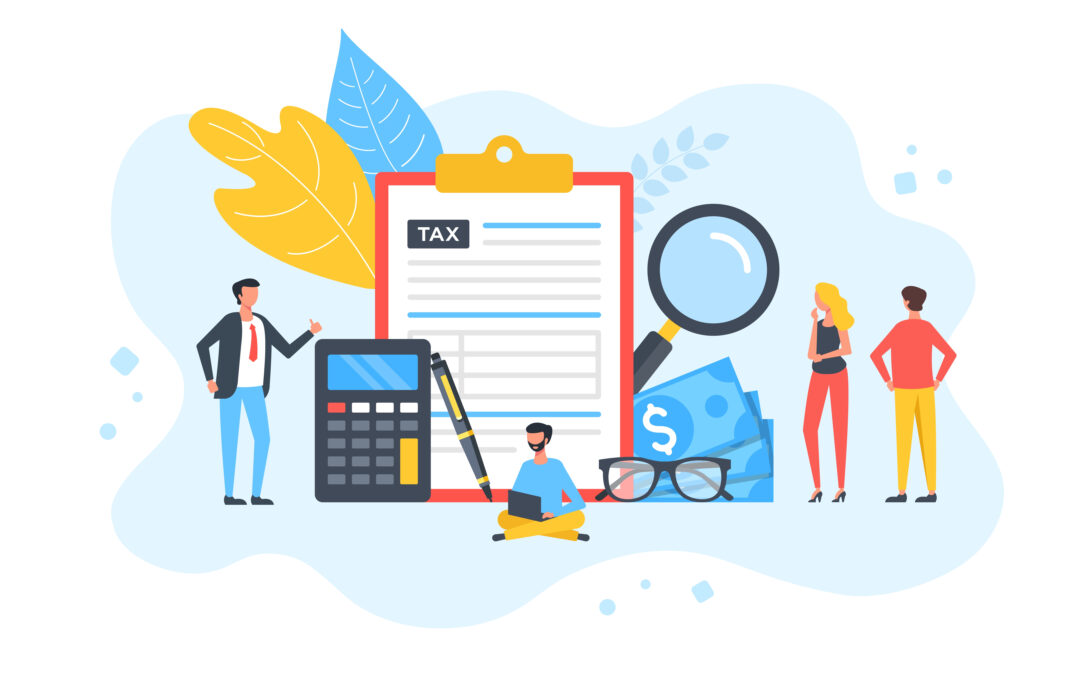
HCM Technology
According to a report by McKinsey, companies with effective talent management practices have 2.2 times higher revenue per employee than those without. Investing in talent management is crucial for any business’s success. With the help of HR technology, companies can streamline their talent management processes and make data-driven decisions. In this blog post, I’ll share four ways HR technology can improve talent management and help your company achieve its goals.
As the competition for top talent intensifies, companies need to prioritize talent management to attract and retain the best employees. Building digital dexterity can help companies streamline their talent management processes, provide better insights into employee performance, and enable data-driven decision-making. In this blog post, we’ll explore four ways HR technology can improve talent management and help your company succeed.
In this blog post, we’ll discuss four ways HR technology can improve talent management.
Automating the Recruiting Process
The first step in effective talent management is attracting and selecting the right candidates. However, traditional recruiting processes can be time-consuming and inefficient. HR technology can automate many aspects of the recruiting process, including posting job listings, screening resumes, scheduling interviews, and sending offer letters. By automating these tasks, HR professionals can save time and focus on more strategic initiatives, such as building an employer brand and developing a diverse and inclusive workforce.
To streamline the recruitment process, companies can use HR technology solutions such as an applicant tracking system (ATS) to automate the entire hiring process, from posting job vacancies to interviewing candidates to extending job offers. An ATS can help HR teams efficiently manage job postings, resumes, and applicant data all in one place, providing a seamless experience for both HR teams and candidates. Companies can also leverage AI-powered tools that can analyze resumes, identify top candidates, and predict a candidate’s likelihood of success in the role.
Providing Better Onboarding and Training
Once you’ve hired the right candidates, it’s essential to onboard them effectively to set them up for success. HR technology can help streamline the onboarding process by automating paperwork, providing online training modules, and creating a personalized onboarding experience. By providing better onboarding and training, companies can reduce employee turnover and ensure that new hires are productive and engaged from day one.
To foster employee development, companies can use HR technology solutions like learning management systems (LMS) to provide employees with easy access to training and development materials. LMSs can help companies create and deliver training content to employees, track employee progress, and measure the effectiveness of training programs. Companies can also use performance management tools that can provide continuous feedback to employees, track their goals, and help them develop new skills. For example, a company can use an LMS to provide its employees with easy access to training and development materials, which can help them improve their skills and enhance their productivity.
Enabling Continuous Performance Management
Traditional performance management processes, such as annual performance reviews, are often outdated and ineffective. HR technology can enable continuous performance management by providing real-time feedback, setting goals and objectives, and tracking progress. By enabling continuous performance management, companies can provide more personalized and meaningful feedback to employees, identify areas for improvement, and foster a culture of continuous learning and development.
To enhance performance management, companies can use HR technology solutions like performance management software that can track employee goals, provide continuous feedback, and facilitate regular performance reviews. Performance management software can help companies establish performance standards, provide feedback to employees, and identify areas for improvement. Companies can also use data analytics tools to track employee performance metrics and identify trends or patterns. For example, a company can use a performance management software to track employee goals, provide continuous feedback, and facilitate regular performance reviews, which can help employees achieve their goals and enhance their performance.
Using People Analytics to Make Data-Driven Decisions
HR technology can provide valuable insights into employee performance, engagement, and retention through people analytics. By using data to identify trends and patterns, HR professionals can make data-driven decisions about talent management initiatives, such as training and development programs, succession planning, and workforce planning. By leveraging people analytics, companies can make better decisions and achieve their talent management goals more effectively.
To improve employee engagement, companies can use HR technology solutions such as employee engagement platforms that offer pulse surveys, employee recognition programs, and feedback mechanisms. These platforms can help companies identify areas of concern, gather feedback from employees, and take action to address issues. Companies can also use communication tools like chatbots or instant messaging apps to create a collaborative work environment and facilitate employee communication. For example, a company can use an employee engagement platform to gather feedback from employees, measure employee sentiment, and take action to address issues that arise.
Key Takeaways Summary
- HR technology can automate many aspects of the recruiting process, saving time and enabling HR professionals to focus on more strategic initiatives.
- By providing better onboarding and training, companies can reduce employee turnover and ensure that new hires are productive and engaged from day one.
- Continuous performance management enables companies to provide more personalized and meaningful feedback to employees and foster a culture of continuous learning and development.
- People analytics can provide valuable insights into employee performance, engagement, and retention, enabling HR professionals to make data-driven decisions about talent management initiatives.
In today’s competitive job market, effective talent management is crucial for any business’s success. By leveraging HR technology, companies can streamline their talent management processes, provide better insights into employee performance, and enable data-driven decision-making. By implementing the four strategies we’ve discussed in this blog post, companies can attract and retain top talent, improve employee productivity and engagement, and achieve their talent management goals more effectively.
If you feel your talent management system could benefit from implementing HR technology, call us at (225) 930-8300 or visit https://www.highflyerhr.com/take-test-drive/ today!

HCM Technology

HR Solutions
A recent report by McKinsey Global Institute revealed that by 2030, up to 375 million workers, or 14% of the global workforce, may need to switch occupational categories due to automation and digitization. This shift to a digital workforce emphasizes the need for HR and Payroll professionals to have digital dexterity, the ability to adapt to new technologies and use them to enhance productivity and drive business success.
In today’s fast-paced business environment, technology is rapidly transforming the workplace. With the pandemic forcing organizations to adapt to remote work and digital operations, the need for digital dexterity is more crucial than ever. In this blog, we will explore what digital dexterity is, why it’s essential for HR and Payroll professionals, and how you can develop it to thrive in a digital workplace.
What is Digital Dexterity?
Digital dexterity refers to the ability to use technology to work effectively and efficiently. It involves not only technical skills but also the ability to adapt to new tools and work processes. Digital dexterity enables professionals to navigate the ever-evolving digital landscape, stay ahead of the curve, and drive innovation in their organizations.
Why is Digital Dexterity Crucial for HR and Payroll Professionals?
As automation and digitization continue to disrupt the workforce, HR and Payroll professionals need to have digital dexterity to stay relevant and provide value to their organizations. Here are some reasons why:
Streamlined Processes
Digital dexterity enables HR and Payroll professionals to automate routine and repetitive tasks, such as data entry, payroll processing, and benefits administration. This allows them to focus on more strategic tasks that drive business growth, such as talent management, employee engagement, and leadership development. By streamlining processes, HR and Payroll professionals can save time, reduce errors, and increase efficiency. For more on improving payroll processes click here.
Enhanced Data Analysis
Digital dexterity allows HR and Payroll professionals to collect and analyze vast amounts of data, such as employee performance, turnover rates, and compensation trends. With advanced analytics tools and techniques, they can draw insights that help them make better decisions, improve organizational performance, and predict future trends. By leveraging data analysis, HR and Payroll professionals can improve their ability to attract and retain top talent, reduce turnover rates, and optimize their compensation and benefits programs.
Improved Employee Experience
Digital dexterity enables HR and Payroll professionals to provide a better employee experience by leveraging technology. For example, they can use digital tools to streamline the onboarding process, communicate more effectively with employees, and provide self-service access to information such as pay stubs and benefits information. By improving the employee experience, HR and Payroll professionals can enhance employee engagement, increase productivity, and reduce turnover rates.
How Can HR and Payroll Professionals Develop Digital Dexterity?
Developing digital dexterity requires a willingness to learn and adapt to new technologies continuously. Here are some steps HR and Payroll professionals can take to build their digital dexterity:
Embrace New Technologies
To develop digital dexterity, HR and Payroll professionals must be open to new technologies and understand their potential to improve work processes. They can start by researching and learning about the latest HR and Payroll software, mobile apps, and other digital tools that can streamline their work and enhance efficiency. It’s also important to understand how to use these tools in different scenarios to address various HR and Payroll challenges.
Take Advantage of Training Opportunities
Training is a critical aspect of developing digital dexterity. HR and Payroll professionals can attend workshops, webinars, and training sessions to build their knowledge and skills. They can also seek out online courses or certifications in digital technology, data analytics, and other relevant areas. By staying up-to-date with the latest trends, HR and Payroll professionals can acquire the necessary knowledge to integrate technology into their work.
Encourage Collaboration
Collaboration is essential to building a digital workforce. HR and Payroll professionals can work together to share knowledge, best practices, and tools. By collaborating with colleagues, they can leverage each other’s strengths to overcome common HR and Payroll challenges. Furthermore, HR and Payroll professionals can benefit from cross-functional collaboration with IT teams to understand and integrate technology more effectively.
Use Data Analytics
Data analytics is a key component of digital dexterity. HR and Payroll professionals can use data analytics to gather insights into workforce trends, identify areas for improvement, and measure the success of HR and Payroll initiatives. By leveraging data analytics, HR and Payroll professionals can make data-driven decisions, which can improve their decision-making process and overall business outcomes.
Key Takeaways Summary:
-
Digital dexterity is the ability to use technology effectively and adapt to new tools and work processes.
-
HR and Payroll professionals need digital dexterity to stay relevant and provide value to their organizations.
-
Digital dexterity enables professionals to streamline processes, analyze data, and provide a better employee experience.
-
To develop digital dexterity, HR and Payroll professionals should embrace new technologies, take advantage of training opportunities, encourage collaboration, and use data analytics.
-
Developing digital dexterity is crucial to staying relevant and competitive in a rapidly changing digital workplace.
Digital dexterity is essential for HR and Payroll professionals to thrive in a rapidly changing digital workplace. It allows professionals to automate processes, analyze data, and provide a better employee experience. Developing digital dexterity requires a willingness to learn, embracing new technologies, taking advantage of training opportunities, and encouraging collaboration.
The shift to a digital workforce emphasizes the need for HR and Payroll professionals to have digital dexterity. By developing this skill set, professionals can stay ahead of the curve, drive innovation, and contribute to their organizations’ success. As technology continues to transform the workplace, building digital dexterity will be crucial to staying relevant and competitive.

HR Department Support
Did you know that companies with effective talent management strategies have a 40% lower turnover rate than those without? With the current talent shortage in many industries, finding and retaining top talent is more important than ever. In this article, we’ll explore the importance of talent management and how it can help your organization attract and retain the best employees.
As a business leader, you know that your employees are your most valuable asset. But attracting and retaining top talent can be a challenge, especially in today’s competitive job market. That’s where talent management comes in. By implementing effective talent management strategies, you can identify, attract, develop, and retain the best employees for your organization. In this article, we’ll take a closer look at what talent management is, why it’s important, and how you can use it to give your business a competitive edge.
In this article, we’ll explore the importance of talent management and how it can help your organization attract and retain the best employees.
What is Talent Management?
Talent management is the process of identifying, developing, and retaining top employees to achieve organizational goals. It includes everything from recruiting and hiring to training, development, and succession planning. Effective talent management involves a strategic approach to workforce planning, performance management, and career development.
Why is Talent Management Important?
Talent management is important for several reasons. First, it helps organizations identify and attract the best candidates for open positions. In today’s competitve job market it is very important to do everything possible to atttract high probability hires. By having a strong employer brand and offering competitive compensation and benefits packages, you can position your company as an employer of choice. Second, talent management can help reduce turnover and improve employee retention. When employees feel valued, supported, and have opportunities for growth and development, they are more likely to stay with their current employer. Third, talent management can improve organizational performance by ensuring that you have the right people in the right roles with the right skills and experience.
Identify Key Roles
To identify the roles that are critical to your organization’s success, you can start by analyzing your business objectives and identifying the roles that are most closely aligned with those objectives. For example, if your organization’s goal is to expand into new markets, you may need to identify roles that are critical for driving that growth, such as sales or marketing roles. You can also look at roles that are currently in high demand and those that are difficult to fill to determine which roles are most critical.
Develop Competency Models
Once you’ve identified the key roles, you can create competency models that outline the knowledge, skills, and abilities required for each role. For example, for a sales role, the competency model may include skills such as prospecting, relationship-building, and closing deals. You can use these competency models to guide your recruitment efforts and ensure that you are hiring candidates who possess the necessary competencies to succeed in the role.
Implement Succession Planning
Succession planning involves identifying potential successors for key roles and developing a plan to ensure that those individuals are ready to step into those roles when needed. To implement succession planning, you can start by identifying potential successors for each key role and assessing their readiness to take on that role. You can then develop development plans for those individuals to help them build the necessary skills and competencies to succeed in the role.
Invest in Development
To invest in development, you can provide ongoing training and development opportunities for your employees. This can include on-the-job training, mentoring, coaching, and formal training programs. You can also encourage employees to take on stretch assignments or special projects to help them build new skills and gain experience.
Key Takeaways Summary
- Identify key roles that have the greatest impact on your organization’s success
- Create competency models to guide recruitment and development efforts
- Develop succession plans for key roles to ensure a pipeline of talent
- Invest in ongoing employee development to build necessary skills
- Regularly measure and evaluate the effectiveness of talent management strategies
In conclusion, effective talent management strategies are crucial for any organization looking to attract, develop, and retain top talent. By identifying key roles, creating competency models, implementing succession planning, and investing in employee development, your organization can build a strong workforce that drives business success. To learn more about how we can help your organization implement effective talent management strategies, call us at (225) 930-8300 or click here. Let us help you create a workforce that will take your business to the next level.

Compliance
Did you know that small businesses pay an average of $845 per year in IRS penalties due to payroll mistakes? That’s a lot of money that could be saved by avoiding common payroll errors. As an HR professional or small business owner, it’s essential to get your payroll right the first time. In this blog, we’ll cover the most common payroll mistakes and provide tips on how to avoid them.
Payroll is an integral part of any business, and mistakes can be costly. HR professionals and small business owners need to ensure they are following proper procedures to avoid penalties, compliance issues, and unhappy employees. In this blog post, we’ll provide you with the knowledge you need to avoid the most common payroll mistakes.
Today, we’ll be discussing the most common payroll mistakes that HR professionals and small business owners make and how to avoid them.
Misclassifying Employees
One of the most common payroll mistakes that businesses make is misclassifying employees as independent contractors. While it may seem like a simple mistake, misclassifying employees can have serious legal and financial consequences. Independent contractors are not entitled to the same benefits and protections as employees, and misclassifying an employee as a contractor can result in penalties, back taxes, and lawsuits. To avoid this mistake, make sure to properly classify all employees and contractors based on IRS guidelines.
Failing to Keep Accurate Records
Payroll records are a critical part of any business’s financial management. They document employee pay rates, hours worked, deductions, and taxes. Failing to keep accurate records can result in a host of problems, from underpaying employees to failing to file accurate tax returns. To avoid this mistake, invest in a reliable payroll software system that automatically tracks and records all payroll information.
Missing Deadlines for Tax Deposits and Filings
Payroll taxes must be deposited and filed on time to avoid penalties and interest charges. Missing deadlines can result in steep fines and even legal action. To avoid this mistake, establish a regular payroll tax deposit and filing schedule and stick to it. Make sure to also keep up with changes in tax laws and regulations to avoid any compliance issues.
Incorrect Calculation of Overtime Pay
Another common payroll mistake is incorrectly calculating overtime pay. Under the Fair Labor Standards Act (FLSA), non-exempt employees must receive overtime pay at a rate of 1.5 times their regular hourly rate for all hours worked over 40 in a workweek. Incorrectly calculating overtime pay can result in wage and hour violations and costly lawsuits. To avoid this mistake, ensure that all employees are classified correctly as exempt or non-exempt and that overtime is calculated correctly.
Overlooking Employee Benefits and Deductions
Employee benefits and deductions are an important part of the payroll process. These can include contributions to retirement plans, health insurance premiums, and wage garnishments. Overlooking these benefits and deductions can result in underpaid employees and non-compliance with tax laws. To avoid this mistake, ensure that all employee benefits and deductions are accurately accounted for in your payroll system.
Failure to Stay Up-to-Date with Employment Laws and Regulations
Employment laws and regulations are constantly changing, and failure to stay up-to-date with these changes can result in costly mistakes. For example, failing to comply with the Affordable Care Act (ACA) can result in steep fines and penalties. To avoid this mistake, make sure to regularly review and update your payroll policies and procedures to ensure compliance with all relevant laws and regulations.
Key Takeaways Summary:
-
Misclassifying employees can lead to costly legal issues.
-
Calculating overtime correctly is essential to avoid costly penalties.
-
Accurate record-keeping is crucial to staying compliant and avoiding fines.
-
Compliance with state and federal taxes is necessary to avoid costly penalties.
Avoiding payroll mistakes is critical for HR professionals and small business owners. By following proper procedures and understanding the common mistakes to avoid, you can save your company time, money, and legal headaches. Stay compliant and keep your employees happy by avoiding these common payroll mistakes. If your company still has payroll questions or concerns visit https://www.highflyerhr.com/contact-us/ today to see how we can make painroll painless!






